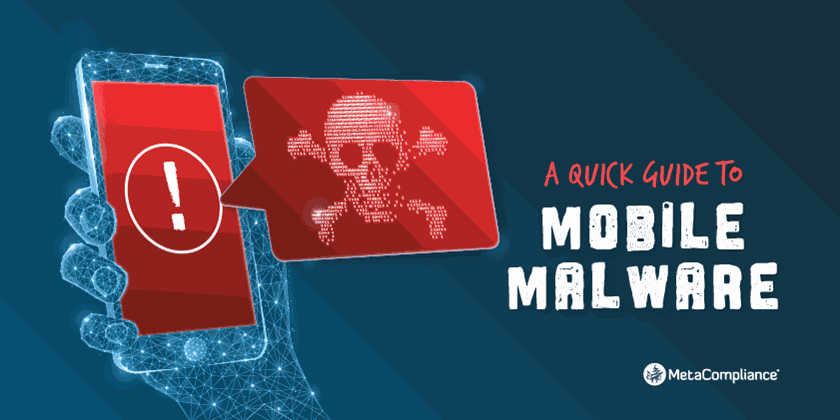Det er slut med at bruge telefonen til et simpelt telefonopkald! Mobiler erstatter nu hurtigt computere som den foretrukne metode til at gå på nettet. Vi bruger vores telefoner til stort set alt, hvad enten det drejer sig om online-shopping, bankforretninger, socialt samvær, arbejde eller opbevaring af værdifulde billeder. De er blevet en forlængelse af os og indeholder et væld af personlige oplysninger, som kan blive dyrebare, hvis de falder i de forkerte hænder.
Ifølge de seneste statistikker er der i dag 5,11 milliarder unikke mobiltelefonbrugere i verden, hvilket er en stigning på 100 millioner i løbet af det seneste år. Dette skyldes den stigende popularitet af smartphone-brug, som forventes at nå op på 2,87 mia. næste år. Det betyder, at over halvdelen af alle mobilbrugere for første gang vil være smartphone-brugere, hvilket afspejler vores stigende afhængighed af smartphones til alt internetrelateret.
Vores telefoner er i bund og grund mini-computere og bør beskyttes på samme måde som vores pc'er og bærbare computere. Men det er netop det, der er problemet. Vi beskytter dem ikke på samme måde.
Vores sikkerhedsprotokoller ser ud til at forsvinde, når vi er på vores telefoner. Vi downloader apps fra tilfældige app-butikker, tjekker vores banksaldo på offentlige wi-fi-netværk, klikker på et tvivlsomt link i en sms - listen er uendelig!
Og disse sikkerhedsbrister er ikke gået ubemærket hen. Cyberkriminelle har været hurtige til at udnytte disse enheder med begrænset sikkerhed, hvilket har resulteret i en kraftig stigning i væksten af mobil malware. Forskere hos Kaspersky har set antallet af angreb med skadelig mobilsoftware næsten fordobles på blot et år. I 2018 var der 116,5 millioner angreb mod kun 66,4 millioner i 2017.
Hvad er mobil malware?

Malware er en type skadelig software, der er udviklet specifikt til at ramme smartphones og tablets. Det kan bruges som våben sammen med traditionel computermalware, hvis målet har en mobil grænseflade.
Der findes mange forskellige typer mobil malware, nogle er mere skadelige end andre. De mest almindelige typer er:
- Spyware - Spyware er ofte indlæst som et program på din enhed og overvåger i hemmelighed din aktivitet, din placering og dine loginoplysninger, før de videresender disse fortrolige oplysninger til en tredjepart.
- Trojanske heste - Trojanske heste inficerer enheder ved at knytte sig til tilsyneladende harmløse eller legitime programmer, der er installeret i appen, og udfører derefter ondsindede handlinger.
- Ransomware - Ransomware er en type malware, der krypterer en brugers data og derefter holder dem som "løsepenge", indtil angriberen får en betaling.
- Virus - Virus er nært beslægtet med trojanske heste og kan installeres på en enhed på flere måder. De er ofte meget destruktive og ofte uoprettelige.
- Keyloggere - Keyloggere sidder på en brugers enhed og logger alle tastetryk i et forsøg på at finde værdifulde oplysninger.
- Banktrojanere - Denne type malware kombinerer en trojaner og et keylogger-angreb og er en yndet metode for hackere. Den opsnapper ofte en brugers legitime bank-app eller narrer brugerne til at downloade bedrageriske bank-apps.
Tegn på, at din telefon kan være inficeret med malware

Der er ofte nogle tegn, der kan indikere, at din telefon er blevet inficeret med malware. Disse omfatter:
- Markant kortere batterilevetid - Det kan være et tegn på, at telefonen har en virus, der hurtigt dræner batteriet.
- Uventet dataforbrug og store telefonregninger - Dette kan være et tegn på, at malware får adgang til dine data eller ringer til premium-tjenester uden din viden.
- Flere pop-up-reklamer - Hvis din telefon er inficeret med adware eller malware, kan det medføre en stigning i antallet af reklamer og pop-ups. Du må ikke klikke på annoncer, der vises på din enhed.
- Enheden slukker uventet - En virus kan få din telefon til at slukke og tænde af sig selv.
- Nye apps vises - Hvis der vises nye apps på din telefon, som du ved, at du ikke har downloadet, kan det være et tegn på, at malware smugler ondsindede apps ind på din enhed.
- Kontakter modtager mærkelige beskeder - Malware kan bruge din enhed til at sende spam-sms'er og e-mails til alle dine kontakter. Dette kan resultere i, at deres enheder også bliver inficeret.
- Dårlig ydeevne og overophedning - Malware og virus kan lægge et enormt pres på telefonens ydeevne og få den til at overophede hurtigt.
Hvad skal du gøre, hvis din telefon er inficeret med malware?

Hvis din telefon er blevet inficeret med malware, skal du straks træffe foranstaltninger for at stoppe enhver skadelig aktivitet. Det første skridt er at skifte telefonen til fejlsikret tilstand for at afbryde enheden fra alle netværk. Dette vil forhindre eventuelle ondsindede apps i at modtage og sende data.
Det næste skridt er at gå til indstillingerne på din enhed og se efter en liste over alle dine aktuelle apps. Tjek, om der er mistænkelige apps, som du ikke er bekendt med. Vælg appen, og slet den derefter med det samme.
Du bør derefter overveje at installere og køre et sikkerhedsprogram for at sikre, at alle trusler er fjernet fra din enhed.
Sådan beskytter du din enhed mod at blive inficeret

På trods af væksten af mobil malware er der nogle skridt, du kan tage for at forhindre, at din enhed bliver inficeret.
1. Installer antivirus-software
En af de bedste måder at forhindre, at din enhed bliver inficeret med malware, er ved at installere et opdateret antivirusprogram. Anti-virus-software registrerer trusler på din telefon og forhindrer uautoriserede brugere i at få adgang.
2. Tjek dine apps regelmæssigt
Hvis du ser mistænkelige apps, der kører på din telefon, bør du slette dem med det samme. Det er også vigtigt at holde dine apps og din enhed opdateret, da cyberkriminelle vil udnytte eventuelle sårbarheder til at hacke sig ind på din telefon.
3. Installer kun apps fra pålidelige kilder
Download kun verificerede apps fra officielle kilder som Google Play Store eller Apple App Store. Tag dig tid til at undersøge både appen og dens udgivere og læse anmeldelser fra andre brugere for at sikre dig, at appen er lovlig og værd at downloade.
4. Kontroller tilladelser
Tilladelser bruges af apps til at få adgang til bestemte funktioner og data på enheden. Hvis en app har en lang liste over tilladelser, der er unødvendige for appens funktion, bør det være et rødt flag og give anledning til mistanke om hensigten med brugen af appen. Jo færre tilladelser en app anmoder om, jo større er sandsynligheden for, at den er sikker.
5. Kontroller og opdater dine telefonindstillinger
Telefonindstillingerne kan ændres for at forhindre installation af indhold, der ikke er fra pålidelige kilder. Telefonen bør give dig besked, før du downloader en app, så du er sikret mod uønsket aktivitet. Sørg for, at du automatisk låser din telefon og har en stærk adgangskode, hvis den skulle blive væk eller stjålet. Dette kan være med til at holde dine personlige data private. En anden god praksis er at deaktivere funktionen "Wi-Fi automatisk tilslutning", så din telefon kun opretter forbindelse til tidligere kendte Wi-Fi-netværk.
6. Klik ikke på mistænkelige links og åbn ikke vedhæftede filer
Enheden er måske ændret, men truslen er stadig den samme. Phishing-svindel narrer folk til at åbne e-mails eller klikke på et link, der ser ud til at komme fra en legitim virksomhed eller en velrenommeret kilde. Linket kan føre dig til et falsk websted, hvor du bliver bedt om at indtaste dine personlige oplysninger, eller føre dig til et websted, der direkte inficerer din computer med ransomware. Hvis du er i tvivl, skal du ikke klikke på linket.
MetaPhish giver et effektivt forsvar mod phishing- og ransomware-angreb ved at træne medarbejdere i at identificere og reagere hensigtsmæssigt på disse trusler. Kontakt os for at få yderligere oplysninger om, hvordan vi kan hjælpe med at beskytte din virksomhed.



